Are you looking for motovloggers to follow?
Be sure to check out our other lists:
Shout Out To PhatboyR6 and No.Bumpers for helping me come up with this collection of motovloggers. So here they are in no particular order!
You Might also like
-
5 Letter Motorcycle Vanity Plate Ideas: Your Guide to Standout License Plates
Your motorcycle is an extension of your personality, a statement on two wheels. And what better way to personalize it than with a unique and eye-catching vanity plate? But coming up with the perfect 5-letter combination can be a challenge. Fear not, fellow riders! This guide will spark your creativity and help you find the ideal license plate to express your inner biker spirit.
Key Takeaways
- Unleash your individuality with a unique and personalized motorcycle vanity plate.
- Explore a variety of 5-letter ideas, from classic cool options to witty wordplay and location-inspired choices.
- Don’t forget to personalize it further with initials, birth year, or your biker nickname.
- Always check local regulations to ensure your chosen plate and bracket comply with safety and visibility requirements.
- Seek inspiration from online communities of motorcycle enthusiasts.
Comparison Table: Motorcycle Vanity Plate Ideas by Category
Category Example Classic Cool RIDER, SPEED, CRUISE Witty Wordplay BIKER, ZOOM, TWISTY Location Love [State Code], CANYON, COAST Personalized Touches Initials, Birth Year, Nickname Introduction: Unleashing Personality on the Road
Motorcycles aren’t just modes of transportation; they’re expressions of identity and freedom. A personalized license plate is a finishing touch that showcases your unique style, humor, or philosophy. This guide offers a collection of creative five-letter motorcycle vanity plate ideas, alongside tips for crafting your perfect plate. Whether you’re looking for inspiration or advice on how to secure your custom plate, we’ve got you covered.
Why Choose a 5-Letter Vanity Plate?
Five-letter plates are concise yet versatile, allowing for a wide range of expressions. They can spell out words, names, or acronyms that resonate with your personal story or your bike’s character. The brevity of these plates makes them easy to remember and recognize, adding an extra layer of personalization to your ride.
Top 5-Letter Motorcycle Vanity Plate Ideas
- RIDER – A straightforward choice that speaks volumes about your passion.
- SPEED – Perfect for the enthusiast who loves to push the limits.
- BEAST – For a powerful bike that commands attention.
- ROAMR – Embrace the spirit of adventure and the open road.
- TWIST – A nod to the twists and turns that make riding exhilarating.
- CRUISE – Perfect for relaxed rides and scenic journeys.
Witty Wordplay:
- BIKER – A straightforward and self-explanatory option.
- ZOOM – Captures the exhilarating feeling of acceleration.
- TWISTY – A playful reference to your love for winding roads.
- LEAN – Hints at your cornering skills (or aspirations!).
- SHIFT – A clever reference to the motorcycle’s essential gear changes.
Top 5-Letter Crypto Vanity Plate Ideas:
- HODL – A popular crypto term representing a long-term buy-and-hold strategy.
- SATOSHI – A tribute to Satoshi Nakamoto, the pseudonymous creator of Bitcoin.
- GWEI – The smallest unit of Ether, the cryptocurrency used on the Ethereum blockchain.
- MOON – A slang term expressing hope for a cryptocurrency’s price to rise significantly.
- FIAT – Refers to traditional currencies like USD or EUR, often contrasted with crypto.
Bonus Ideas:
- BTC – Abbreviation for Bitcoin, the first and most popular cryptocurrency.
- ETH – Abbreviation for Ether, the second-largest cryptocurrency by market capitalization.
- NFT – Stands for Non-Fungible Token, a unique digital asset representing ownership of something.
- DEFI – Short for Decentralized Finance, a financial system built on blockchain technology.
- MINER – Refers to individuals who use computers to validate cryptocurrency transactions and earn rewards.
Location Love:
- [State Code] – Show your state pride with a simple and bold choice.
- CANYON – For those who love carving through mountain passes.
- COAST – Perfect for coastal cruisers.
- RIVER – If scenic riverside rides are your jam.
- [City] – Represent your hometown or favorite riding location.
Personalized License Plate Ideas for Motorcycles
When it comes to personalized plates, the options are limitless. Consider using:
- Nicknames: An affectionate or cool nickname that defines you.
- Hobbies: Words that represent your interests or hobbies outside of biking.
- In-jokes: Something that only you and your riding buddies understand.
- Initials: A classic choice with a personal touch.
- Birth year: A unique way to incorporate a personal detail.
- Favorite number: If it’s lucky or meaningful, flaunt it!
- Model name: Show off your love for your specific motorcycle.
Motorcycle License Plate Ideas: Beyond Words
Apart from text, consider the aesthetic of your plate. Some regions allow symbols, which can help your plate stand out even more. For example, a heart symbol can replace the word “love,” or a number can substitute for its written form.
License Plate Motorcycle Bracket
Choosing the right bracket is as important as the plate itself. A bracket that complements your motorcycle’s style while securely holding your plate is crucial. Consider these factors:
- Material: Durable materials like stainless steel or aluminum resist rust and wear.
- Design: From minimalist to ornate, select a bracket that matches your bike’s aesthetic.
- Installation: Ensure the bracket fits your bike’s make and model for a seamless installation.
License Plate Ideas for Motorcycles: Making It Unique
Your license plate should be as unique as your ride. Experiment with:
- Numbers: Use numbers to represent letters or significant dates.
- Creative Spelling: Play with phonetics to create memorable plate ideas.
- Mix and Match: Combine letters and numbers for a plate that stands out.
Beyond the Plate: Mounting and Inspiration
Once you’ve found your perfect 5-letter combination, finding a license plate motorcycle bracket is crucial for proper mounting and legal compliance. Check your local regulations to ensure your chosen plate and bracket combination adheres to safety and visibility requirements.
For further inspiration, explore online communities and forums dedicated to motorcycle enthusiasts. You’ll find a treasure trove of creative license plate ideas, motorcycle customization tips, and a supportive community of fellow riders.
Remember, your motorcycle vanity plate is a reflection of your unique style. So, have fun, be creative, and ride safe!
Conclusion: Your Plate, Your Pride
A personalized motorcycle license plate is more than just a legal requirement; it’s a statement. It’s an opportunity to showcase your creativity, personality, and passion for riding. With the ideas and tips provided, you’re well on your way to choosing a vanity plate that reflects your unique spirit. Remember, the best plate is one that brings a smile to your face every time you gear up for a ride.
Explore your options, follow the regulations, and make your motorcycle truly yours. Ride safe, and let your personalized license plate tell your story to the world.
Personalized Plates in New Jersey
FAQs:
-
Can I use special characters in my vanity plate?
- It depends on your region’s DMV rules. Some allow limited use of symbols, while others restrict plates to letters and numbers only.
-
How do I check if my desired plate is available?
- Most DMVs offer an online service where you can check the availability of your desired plate.
-
Is there an extra cost for personalized plates?
- Yes, personalized plates typically come with an additional fee over the standard registration cost.
-
How long does it take to receive my personalized plate?
- Processing times vary by region but expect several weeks from application to delivery.
-
Can I transfer my personalized plate to a new motorcycle?
- Yes, in most jurisdictions, you can transfer your personalized plate to a new vehicle, subject to DMV procedures and fees.
-
How to Ride a Motorcycle in the Rain
Be it a shower or deluge, rain can be your worst nightmare when on a motorcycle if you’re not properly prepared. During the spring and winter months, precipitation is unpredictable, and if you are in a rainy state, expect to get caught at least one shower while riding your bike. Rather than avoiding rainy days altogether, learn to ride your motorcycle in the rain.
Before The Ride
For maximum safety, inspect your bike to make sure it’s ready to tackle a ride in the rain.
• Fluids: Check your motorcycle to make sure there’s no brake fluid or oil leakage. While oil leaks aren’t very dangerous in dry conditions, when oil mixes with water, the road becomes a slick and dangerous course.
• Brakes: Make sure the brake pads have enough material left to help you with prompt stops in wet conditions.
• Tires: Check that your tires have enough tread to push water away and grip the road. You also want to ensure they have enough air pressure. Under or over-inflated tires react differently in water, but both are potentially dangerous.Weatherproof Gear
In order to keep you and your bike safe, you should have the correct riding gear and attire ready to go. You can choose between water-resistant and waterproof items. Water-resistant will shed water, but after a period of time, water will begin to permeate the material. Waterproof, on the other hand, will never allow for water to absorb into the material, unless you get completely submerged in water.
• Water-resistant or Waterproof Gear: Jackets and one piece suits should be zipped up tightly when riding in the rain to prevent water from seeping. Zippers should have a flap that covers the edges to protect the interstices. Cuffs on the jacket or coat need to be long enough to reach your gloves.
• Riding Boots and Gloves: More effective deterrents against complete saturation of your clothes. Both boots and gloves need to be tight enough to prevent water from dripping through. No one likes cold, wet socks.
• Helmets and Goggles: For the best protection, get a full-faced helmet. If you have a ½ or ¾ face helmet, get a pair of goggles. Pair the goggles with a waterproof balaclava that can shed water away from your face.
• Miscellaneous: If you have a saddlebag or storage unit, consider keeping a change of dry clothes with you. Also, keep plastic bags with you to keep valuables dry if you happen to get caught in a sudden rainstorm. Dry bags or waterproof backpacks can also help.Be Cautious Of Road Conditions
Wet roads are dangerous for motorcyclists and other vehicle drivers, regardless of how prepared you may be. Even when the roads appear clean, they could be slick from oil. Here are some things to consider when traveling by motorcycle in the rain:
Less Traction
The first hour of rainfall is the most dangerous, because oils absorbed into the asphalt rise to the surface. During this time, it’s best to pullover at a rest stop about wait for about an hour. Once the rain has washed the road of oil and debris, you can head out again. Remember that this also means an increased braking distance.
Less Visibility
Sometimes, the fog or mist is too dense, or the rain is falling so hard you or other drivers can’t see. You can make yourself more visible to the traffic around you by wearing high visibility clothing and reflective patches.
Hydroplaning Risk
Hydroplaning occurs when water prevents the tire from making contact with the road. Reduce the risk of hydroplaning by avoiding painted lines, manhole covers, iridescent patches on the road and puddles (oil), tar snakes, metal crossing, and other places with reduced traction.
Also, you should reduce your speed when approaching puddles you can’t maneuver around. Start slowing down, squeeze the clutch, then coast through the puddle. If you’re going too fast, it’s better to maintain that velocity rather than slowing down abruptly, as this will reduce friction could cause fishtailing.
Decrease the risk of hydroplaning further with all-weather tires.Nature’s Wrath
Stay aware of lightning, hail, ice, sleet, and other conditions that could transpire in a rainstorm. High winds can cause debris to fall into the road, and you might not see it due to decreased visibility. If it starts lightning, pull over.
Conclusion
Not every day is going to be perfect riding weather. Planning ahead and being prepared goes a long way when dealing with rainy conditions. Not only will you stay dry, but you will arrive at your destination safely.
Want more riding tips? Head over to my YouTube channel. Subscribe to receive notifications and never miss an update. -
Viking Cycle Motorcycle Rain Gear Review
If you’re a biker, you’ve undoubtedly heard of Viking. They’re a leading name in motorcycle gear, making some of the best coats, packs and much more. Did you know they also make the best motorcycle rain gear?
Riding motorcycle in the rain comes with a host of problems, not all of which have to do with road safety. I you live in an area that runs the gamut of climates and weather, and you like to depend on your bike for transportation, you need to be prepared.
When it comes time to buy your motorcycle rain suit, you want the best motorcycle rain gear you can get, and unsurprisingly, that’s going to come from Viking – who else?
What is Motorcycle Rain Gear?
Rain gear for motorcycle riding consists of one or two components – at least a jacket/top, and often, a pair of easily-removed pants. The material used is water-resistant, often nylon or poly-synthetic in nature, capable of sloughing off the built up water, and helping to fight the cold, damp wind you’ll be plowing into at high speed.
Not all rain gear for motorcycle riding is made equally, and Viking, already known for their excellent jackets, pants and packs, have combined art and material sciences to produce the best rain suit for motorcycle riders that money can buy.
Not only will it keep you warm and dry, but it’s remarkably easy to clean – count on mud and dirty tar-laden water splashing on you if you’re interested in riding motorcycle in rain.
Is it Lame to Wear Rain Gear on a Motorcycle?
You like to be respected by your fellow bikers, and there’s nothing wrong with that. If you’re going to ride, you want to ride in style and comfort. This has led some motorcycle riders to leave rain gear for motorcycle riding out of their repertoire in the past.
However, there is nothing lame or uncool about rain gear – the dirty water flying up off the road, and the rain itself, will ruin a leather jacket or a good pair of pants, and the high wind can result in you catching a cold, or even the flu or pneumonia.
Besides, the best motorcycle rain suit designs are quite stylish, matching any rider’s taste in bike and in the rest of their ensemble.
You don’t want to arrive at your destination soaking wet, as wet clothes is one of the most uncomfortable things one can imagine. On a colder, rainier day, you can become very ill if you allow yourself to get wet like this, and the wind will chew right through you as well.
Safety on a motorcycle isn’t just about riding properly and wearing your helmet. It’s about protecting your whole body from the elements, and that includes rain.
OVERVIEW
Viking Cycle Rain Gear offers you the freedom and comfort of movement for every biker’s needs in heavy rainy weather. The color options are bright for stronger visibility, along with reflective striping on the jacket to make sure you get to and from each destination safe and sound. Soft polyester outer shell with PVC packaging; our jacket has a Full-Length Zipper with a Velcro Strom Flap as well. In addition, we’ve added a head shield on the calf for added comfort and safe riding.
Ride through the rain while keeping yourself warm and dry by using these quality rain suits. While using this Viking Cycle Rain Suit you’ll be able to ride during heavy rain while knowing that your leathers under the rain suit will stay nice and dry. This rain suit has built-in reflective fabric on the pants and jacket to give you better night time visibility, keeping you dry and safe while you ride during bad weather.
What is the Best Motorcycle Rain Gear?
Viking’s rain suit for motorcycle riders is a top of the line, two-piece design. The stylish exterior is made of the latest in hydrophobic materials, sloughing off water, even gritty, muddy water from the road. The adjustable sleeves and collar of the jacket make it a one-size-fits-all solution that anyone with anybody build can wear comfortably and with pride.
The pants fasten to the jacket easily, creating a complete seal against the elements. With Velcro, it can easily be adjusted while providing a snug, closed fit that will never jam, rust or corrode.
The advanced material also breathes, with an advanced two-way thermal lining that can keep heat in against the cold, while also allowing breathing so summer rains don’t cook you in your own sweat and heat.
With an attractive gray/black style, it provides a timeless look that’s anything but lame or unfashionable, matching any bike, and any rider, be they young or old. If you’re interested in riding a motorcycle in rain, this is definitely the gear for you. Now you can enjoy those cross-country rides and be prepared for any weather this beautiful country can throw at you, and know you’ll arrive safe, dry, and feeling just fine.
To learn more about Viking’s other awesome biking gear, or about riding a motorcycle in the rain safely, subscribe to my YouTube channel today. I have some awesome things I want to show you, and this is just a taste!
TECHNOLOGY
Viking Cycle’s Rain Gear Fabric is a 100% 600D Polyester coated by PU (polyurethane). The 600D Polyester coated by PU, is also wind and water resistant so it will provide great protection against cold wind and rain and it will not sag and creates less wrinkle overtime. The fabric is light weight but highly resilient against abrasions to provide more resistance between the body and the road for your protection, and also stands against wear and tear for product durability.

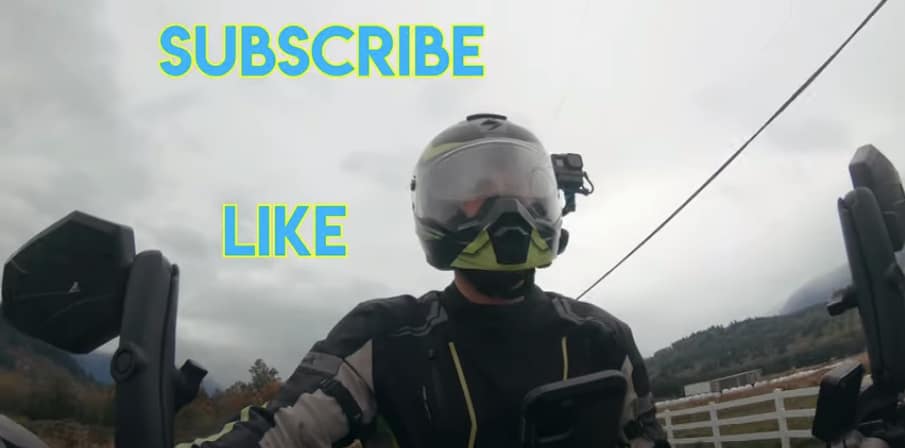
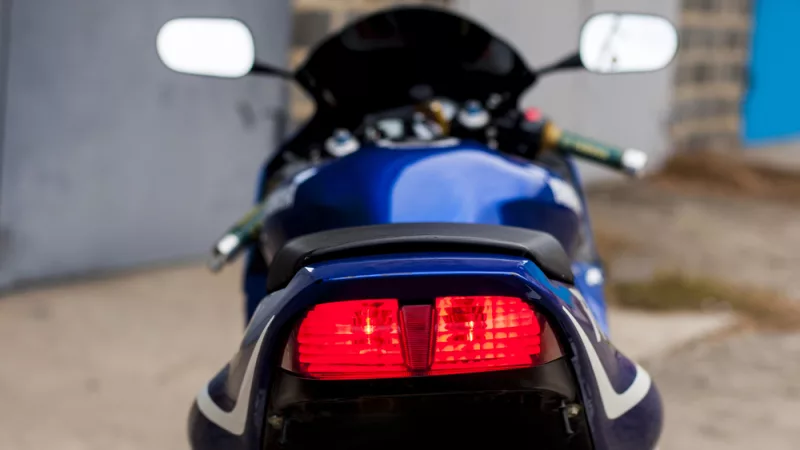
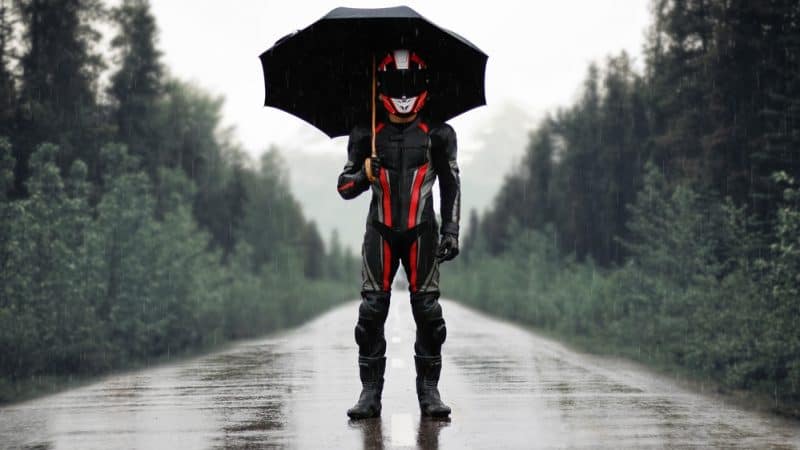
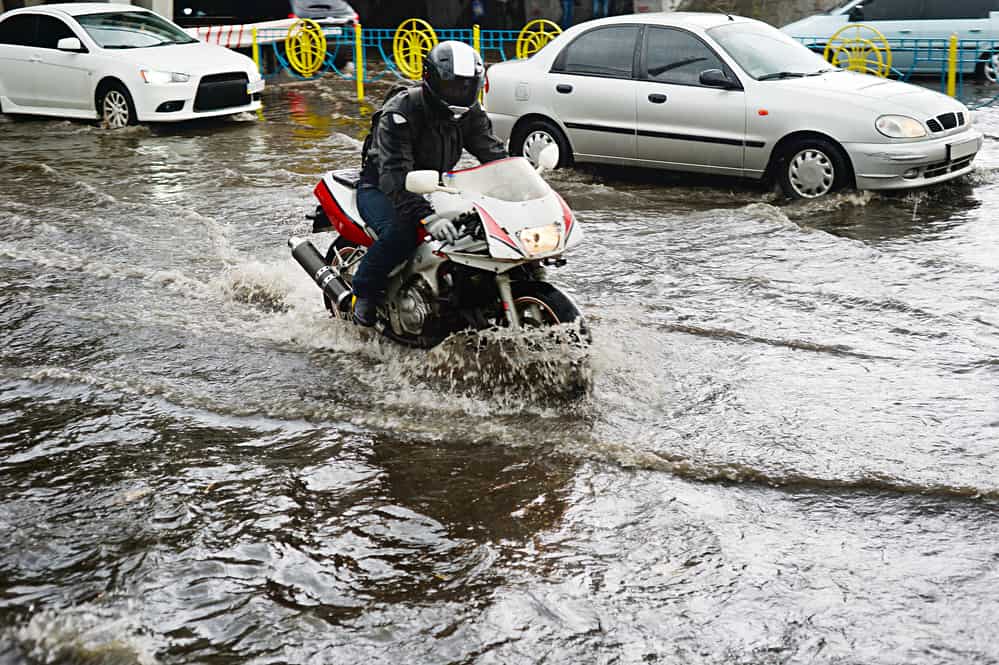



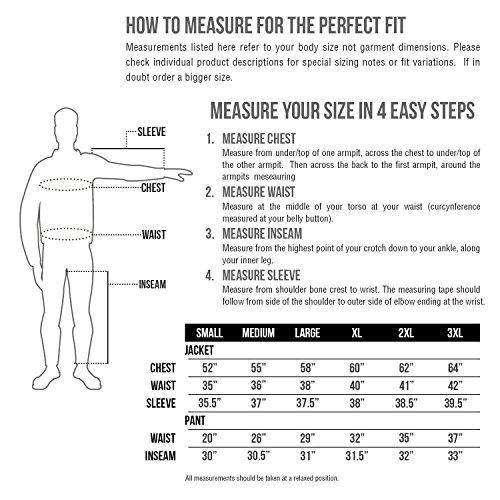






One comment on “The Ultimate List Of Motovloggers On YouTube Part II”